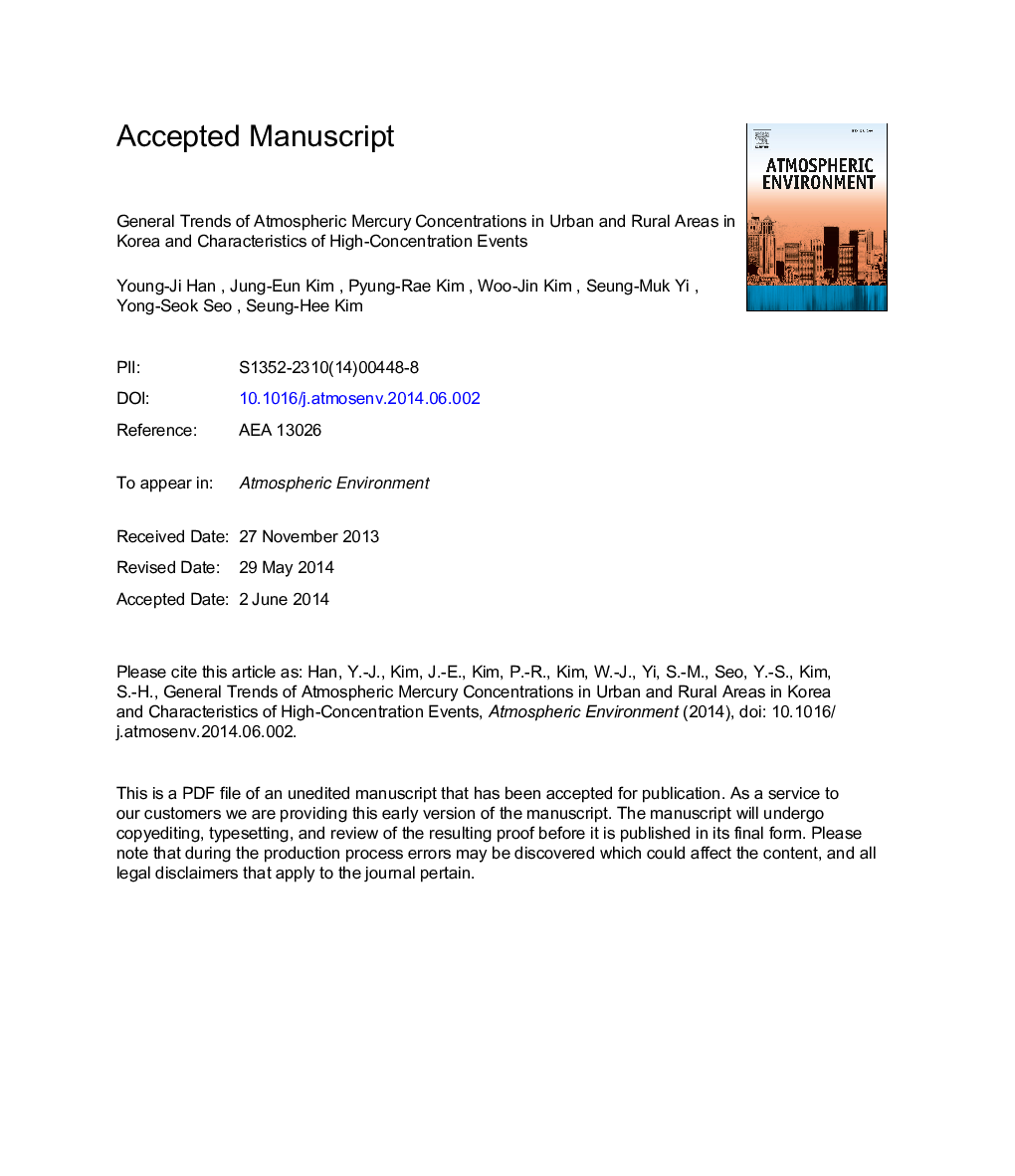| Article ID | Journal | Published Year | Pages | File Type |
|---|---|---|---|---|
| 6339712 | Atmospheric Environment | 2014 | 41 Pages |
Abstract
Long-term measurement of speciated Hg concentrations is the first step toward identifying the seasonal and spatial characteristics of Hg concentrations; however, atmospheric Hg research is scarce in Korea. In this study, total gaseous mercury (TGM), gaseous oxidized mercury (GOM) and particle-bound mercury (PBM) were measured in urban (Seoul) and rural (Chuncheon) areas over a more than 3 year period in order to improve the understanding of speciated Hg transport. The mean concentrations of TGM, GOM and PBM were 3.72 ± 2.96 (0.19-149.84) ng mâ3, 11.3 ± 9.5 (0.9-57.3) pg mâ3, and 13.4 ± 12.0 (2.1-64.3) pg mâ3 at the Seoul site and 2.12 ± 1.47 (0.26-10.75) ng mâ3, 2.7 ± 2.7 (0.1-16.9) pg mâ3, and 3.7 ± 5.7 (0.1-30.0) pg mâ3 in Chuncheon. Both long-range transport and local sources caused high TGM concentration events, while local coal combustion was a main cause of enhancing the GOM and PBM concentrations in Seoul. However, there was no correlation between the pollutants emitted from coal combustion and the speciated Hg concentration in Chuncheon, indicating that other mechanisms were involved in the Hg increase. We found a positive correlation between the GOM and the O3 concentrations and a negative correlation between the GEM and the GOM concentrations, especially on foggy days, suggesting that the oxidation of GEM was an important source for GOM in Chuncheon. In addition, the ratio of PBM/GOM was inversely proportional to the atmospheric temperature and directly proportional to the relative humidity, which suggests that the in-situ formation of PBM through gas-particle partitioning of GOM was important in rural areas.
Related Topics
Physical Sciences and Engineering
Earth and Planetary Sciences
Atmospheric Science
Authors
Young-Ji Han, Jung-Eun Kim, Pyung-Rae Kim, Woo-Jin Kim, Seung-Muk Yi, Yong-Seok Seo, Seung-Hee Kim,
